20 Companies Profiting the Most From War
February 20, 2018 by Sam StebbinsThe grim reality of civil wars in the Middle East, rising tensions between global powers, the spectre of international terrorism, and the increasing threat of cyberattacks are matters of grave concern for world leaders and citizens alike — and the lifeblood of some companies.
In the context of a seemingly ever-more dangerous world, revenue from arms and military services at the world’s 100 largest defense contractors totalled $374.8 billion in 2016, a 1.9% uptick from the previous year, according to the Stockholm International Peace Research Institute (SIPRI).
Maintaining a cutting edge, state-of-the-art arsenal can act as a powerful deterrent against aggressors and can change the outcome of a conflict — and governments across the globe invest accordingly. Sales of defense contractor Lockheed Martin to the U.S. government alone totalled $35.2 billion in 2017, more than the annual budgets of many federal agencies — including the Department of the Interior and the Environmental Protection Agency.
24/7 Wall St. reviewed the 20 companies with the highest revenue from arms sales in 2016 based on the Top 100 Arms-Producing and Military Services Companies report from SIPRI. While the companies on this list span Russia and Western Europe, the United States is home to the vast majority of the largest defense contractors.
Click here to see the 20 companies profiting the most from war.
Click here to see our detailed findings and methodology.
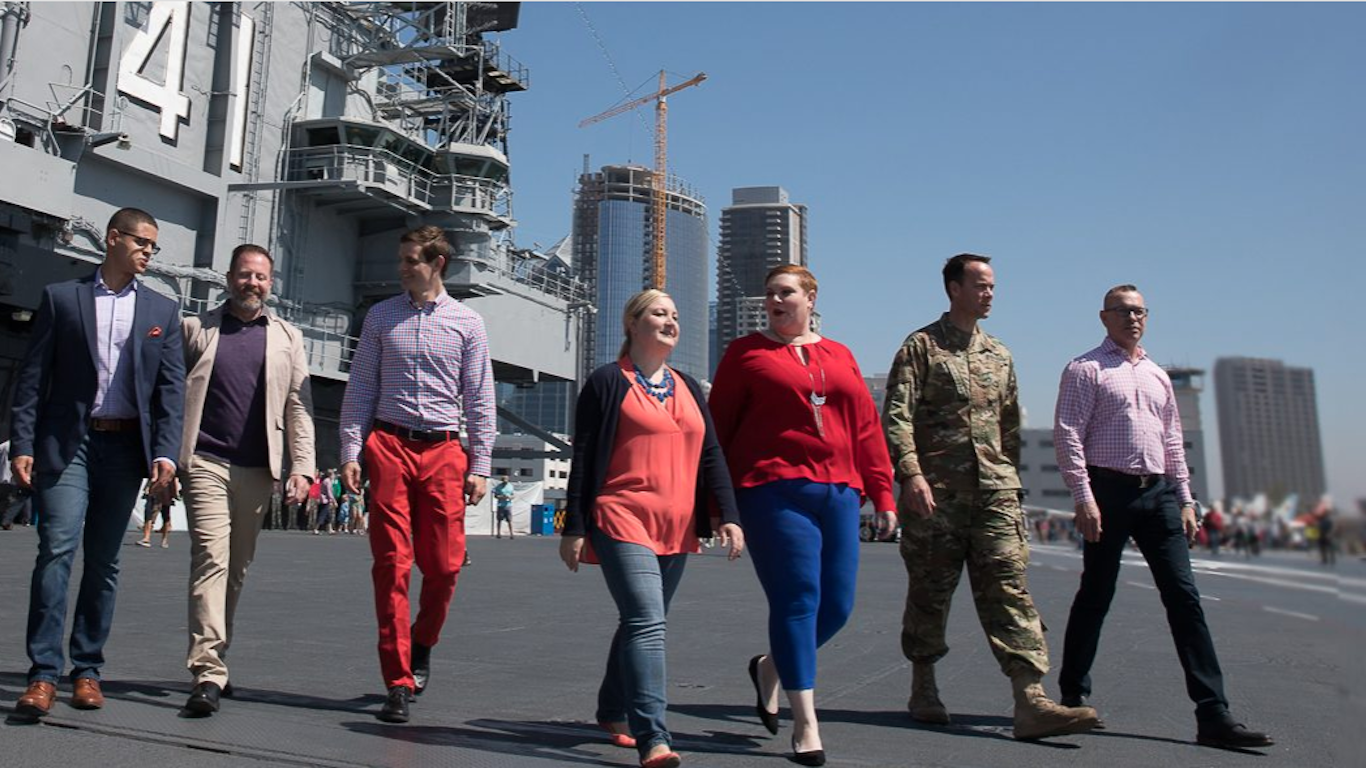
20. Booz Allen Hamilton
> Country: United States
> Arms sales: $4.0 billion
> Total sales: $5.8 billion
> Profit: $252.0 million
> Employees: 23,300
Based in Virginia, consulting firm Booz Allen Hamilton has clients in both the private and public sectors. Once called the world’s most profitable spy organization, the company is working for several U.S. intelligence agencies, including the National Security Agency and the Department of Homeland Security, and branches of the U.S. military. While much of the company’s business is confidential, it provides intelligence and data analysis, engineering, and cybersecurity services in many aspects of defense. Defense and intelligence contracts alone accounted for over two-thirds of the company’s revenue in fiscal 2017.
The company’s partnership with the U.S. government goes back to 1940, when it began advising the Secretary of the Navy in preparation for U.S. involvement in World War II. Booz Allen Hamilton’s relationship with the U.S. government has been close since. Some 30% of the company’s workforce are veterans, and 70% have security clearance.
[in-text-ad]
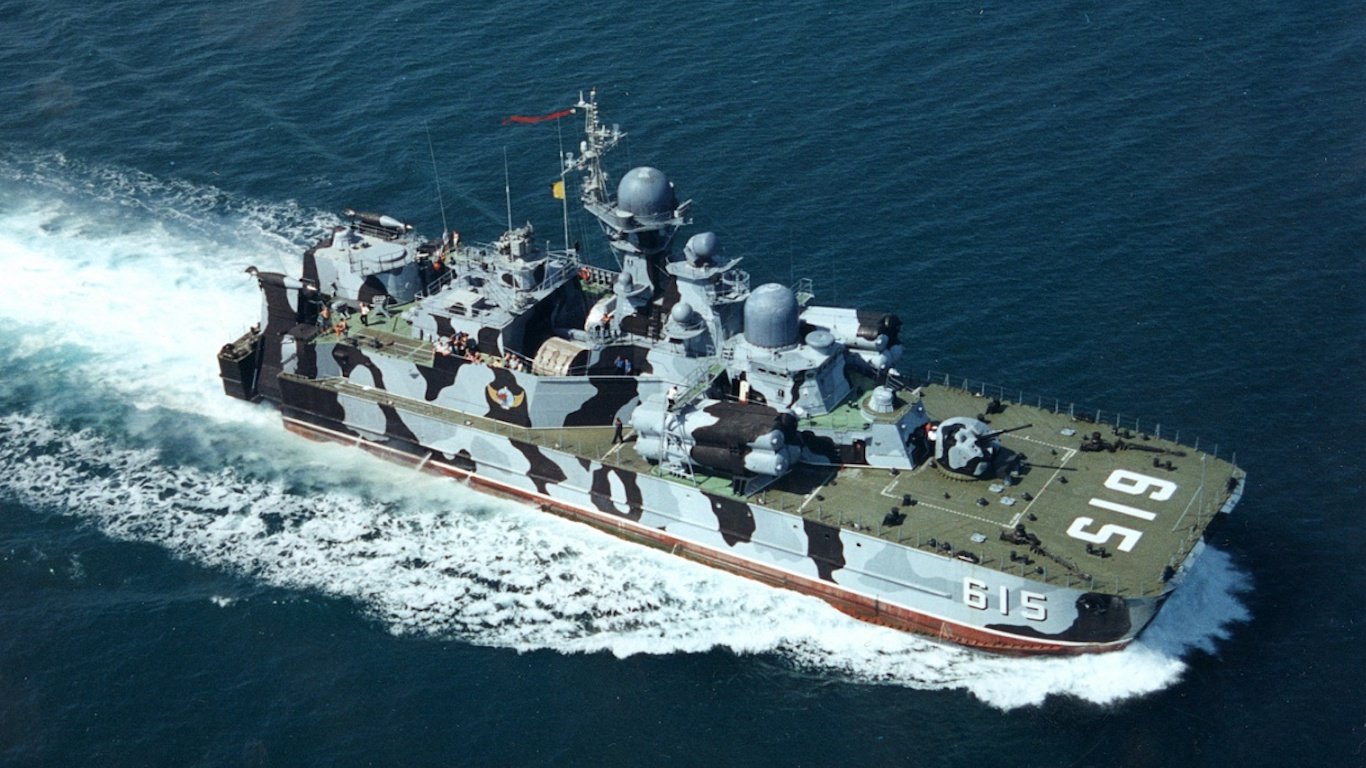
19. United Shipbuilding Corp.
> Country: Russia
> Arms sales: $4.0 billion
> Total sales: $4.5 billion
> Profit: $90.0 million
> Employees: 89,650
United Shipbuilding Corp. is one of two Russian companies to rank among the top 20 arms producing and military services companies in the world. While the company manufactures a range of commercial shipping vessels, its military vessels account for the majority of its business. The company manufactures or is developing 11 different models of military submarines and 16 different warships, in addition to a variety of vehicles used as minesweepers, landing ships, and patrol vessels.
United Shipbuilding was established in 2007 by decree of Russian President Vladimir Putin and is now the largest shipbuilding company in Russia and the broad geographic region between the Baltic Sea and the Pacific Ocean. United Shipbuilding vessels comprise nearly the entire Russian Naval fleet.
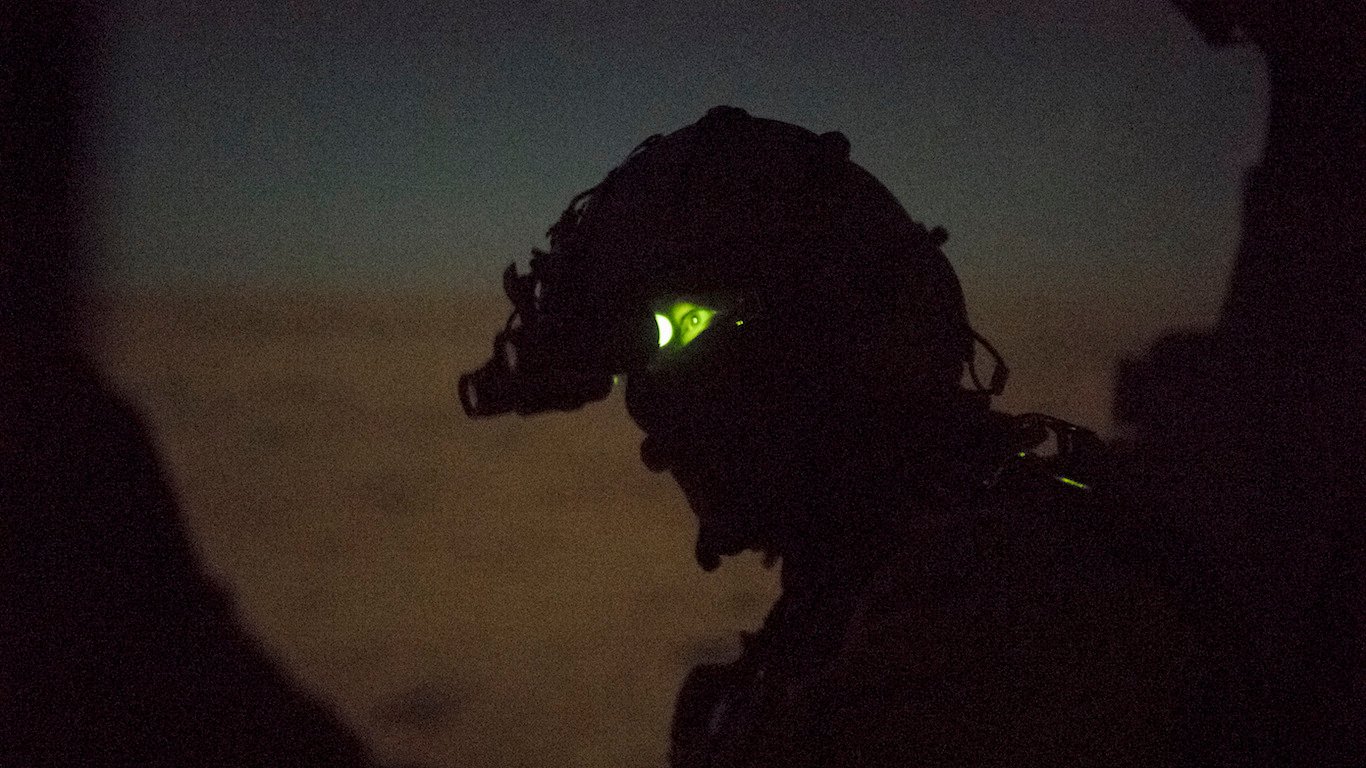
18. Harris Corp.
> Country: United States
> Arms sales: $4.2 billion
> Total sales: $5.9 billion
> Profit: $553.0 million
> Employees: 17,000
Florida-based government contractor Harris Corp. reported $5.9 billion in revenue in 2016 — the vast majority of which came from arms sales and military service. The company’s divisions include electronic systems, which provides products and services related to electronic warfare, avionics, undersea systems, and air traffic control, as well as communication systems, which manufactures night vision and tactile communication products. The company has clients in over 100 countries. Standing contracts include lucrative deals with the U.S. Army, Air Force, and Special Operations Forces.
The company’s history with the U.S. government stretches as far back as WWII, when U.S. bombers began using Harris Corp.’s newly developed bombsight that enabled more precise bombings at high altitude.
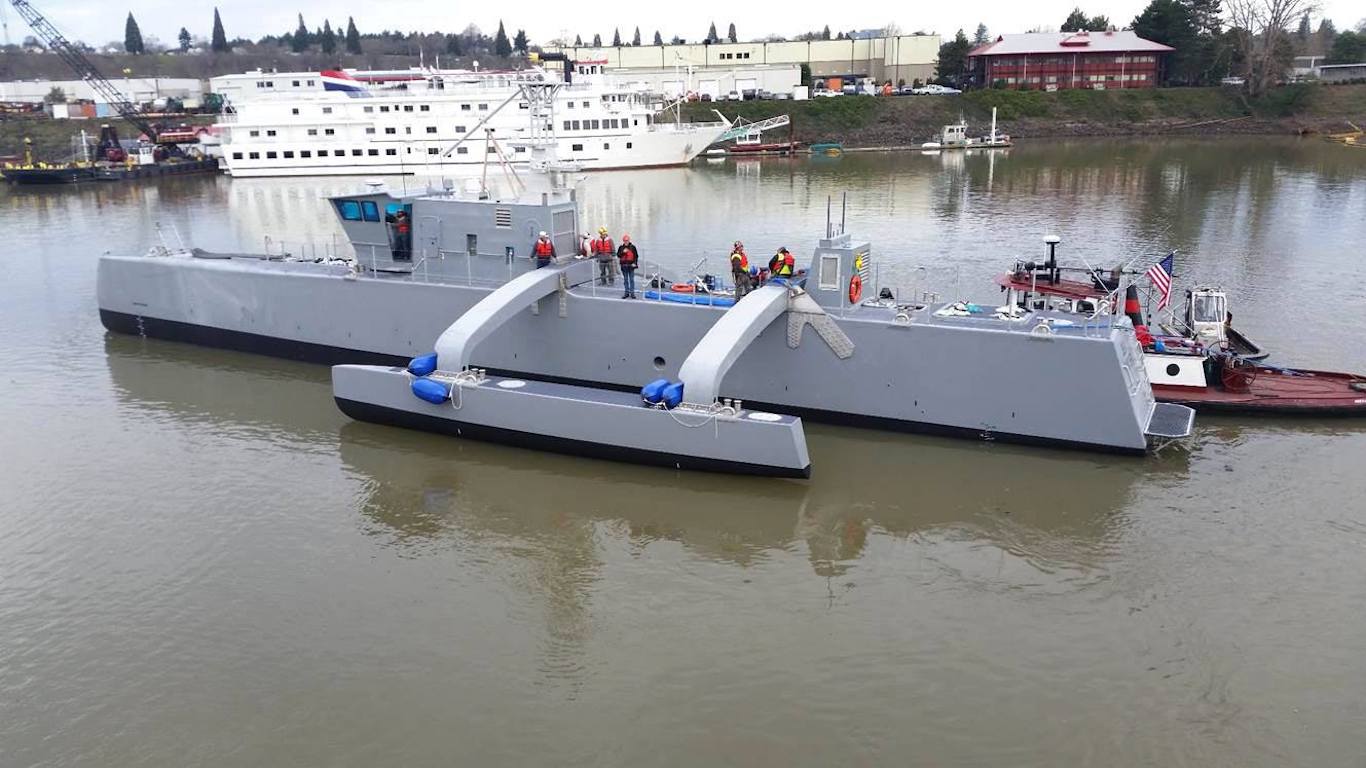
17. Leidos
> Country: United States
> Arms sales: $4.3 billion
> Total sales: $7.0 billion
> Profit: $246 million
> Employees: 32,000
Leidos is a defense contractor based in Reston, Virginia. The company, which was known as SAIC until it spun off part of its operations in 2013, was awarded its first long-term government contract was 1970 by the now defunct Defense Nuclear Agency. Soon after, the company also provided support to weapons development projects of the U.S. Air Force and cruise missile development projects of the Department of Defense. Today, the company is heavily involved in a global underwater arms race, developing unmanned submarines to shadow otherwise virtually undetectable Russian, Iranian, and Venezuelan submarines that could pose a threat to U.S. interests.
Leidos revenue from military services and arms sales in the 2016 calendar year totalled $4.3 billion, a 29.1% increase from the previous year.
[in-text-ad-2]
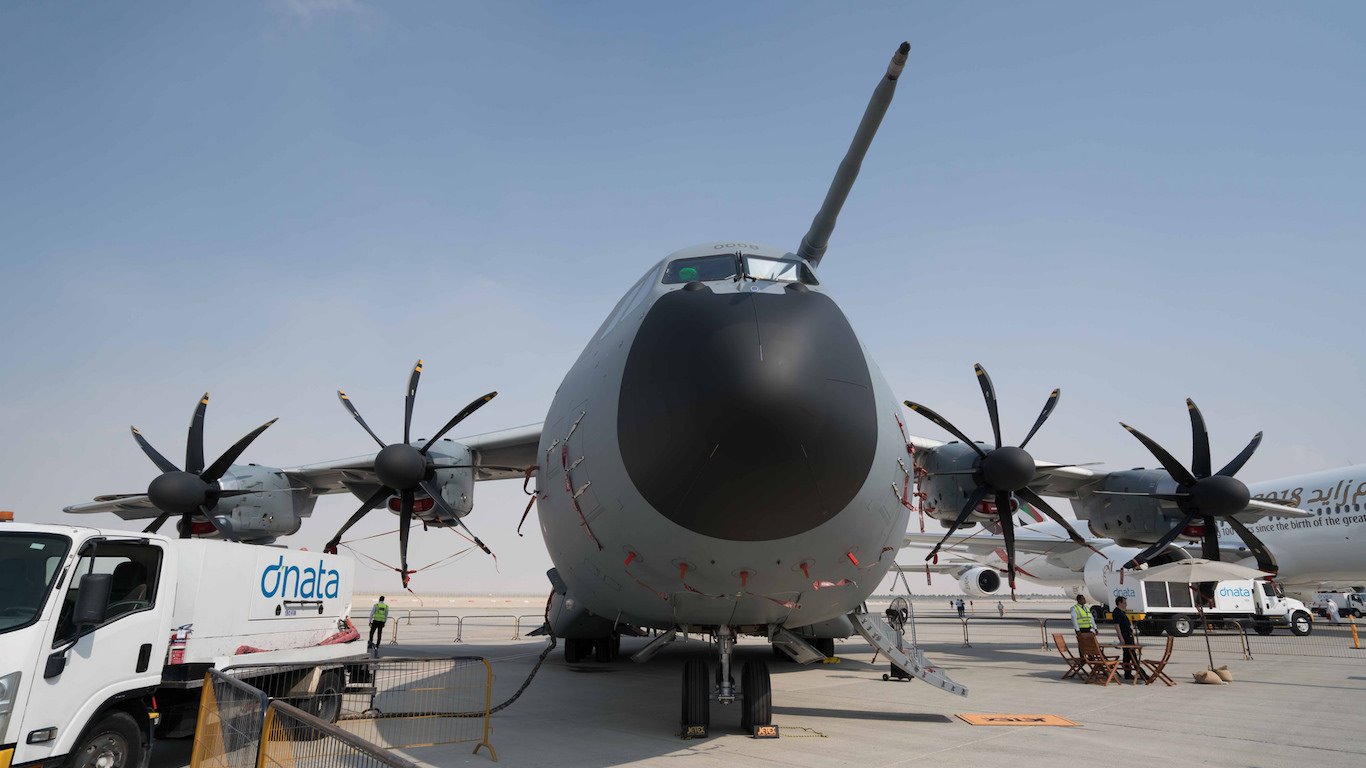
16. Rolls-Royce
> Country: United Kingdom
> Arms sales: $4.5 billion
> Total sales: $18.6 billion
> Profit: N/A
> Employees: 49,900
Rolls-Royce is one of only two defense contractors based in the United Kingdom to rank among the world’s 20 largest arms and military services companies by arms sales. Primarily known as a luxury automaker, the company’s arms sales and military services accounted for just 24% of its revenue in 2016.
Rolls-Royce is currently the only company in the world manufacturing engines that allow fighter jets to take off vertically. The company’s vertical lift jet technology is currently used by the U.S. Marine Corps. Other military-grade products Rolls-Royce develops include rotary engines for medium and heavy lift air transport vehicles, engines for long range patrol aircraft, and an engine for unmanned aerial vehicles.
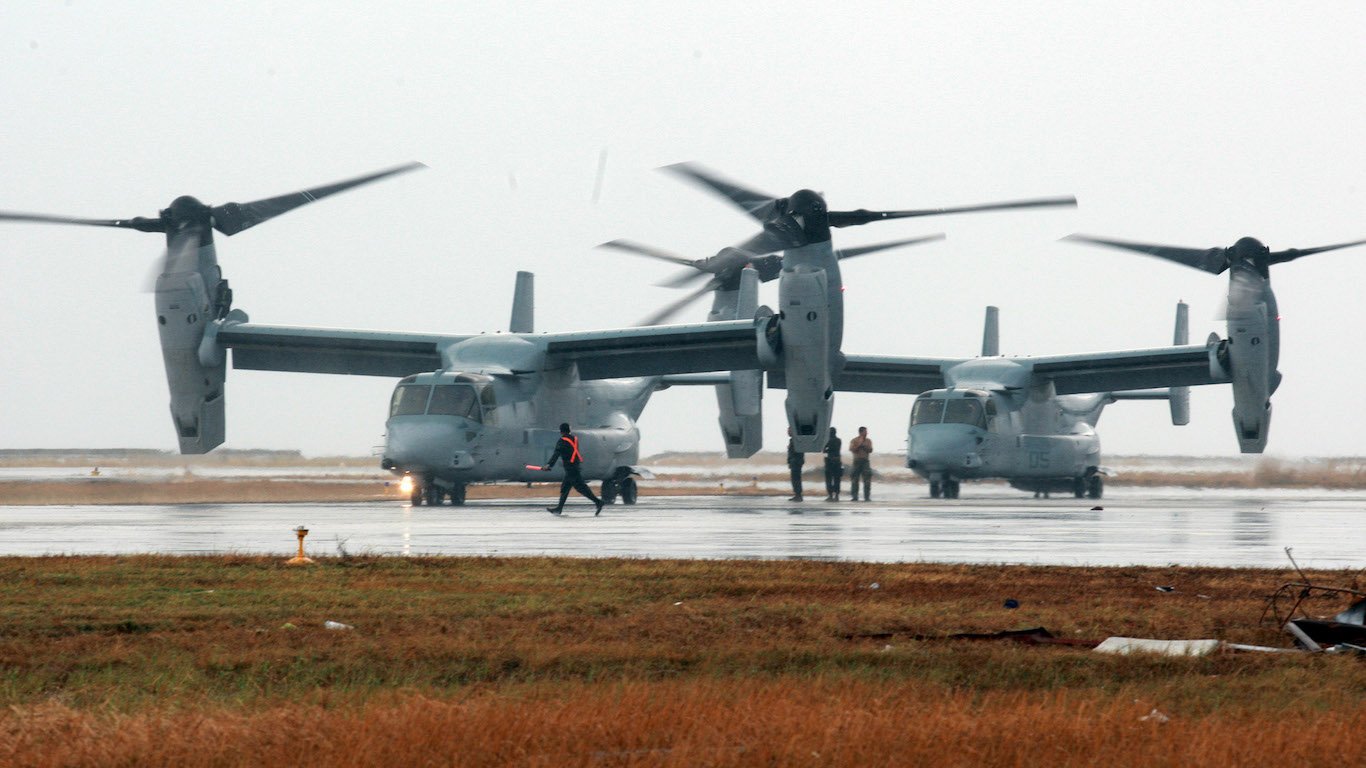
15. Textron
> Country: United States
> Arms sales: $4.8 billion
> Total sales: $13.8 billion
> Profit: $843.0 million
> Employees: 36,000
Textron is a Rhode Island-based aerospace and defense company. Bell Helicopter, a subsidiary of Textron, manufactures a range of military aircraft, including the Osprey, Valor, and Zulu helicopters. In addition, Textron develops and manufactures unmanned air and surface vehicles, armored combat vehicles, and missiles and missile defense systems. Textron has either designed or built the reentry vehicle for the entirety of the U.S. Air Force’s current arsenal of intercontinental ballistic missiles.
Despite the substantial size and scope of the company’s defense division, the majority of Textron’s business is unrelated to arms sales and military services. The company has a lucrative financial services division as well as a commercial and industrial fuel systems segment. Military products and services accounted for just 34.5% of Textron’s revenue in 2016.
[in-text-ad]

14. Bechtel Corp.
> Country: United States
> Arms sales: $4.9 billion
> Total sales: N/A
> Profit: N/A
> Employees: 53,000
Based in San Francisco, construction and civil engineering company Bechtel operates in multiple businesses including infrastructure, mining, oil and gas, and defense. Bechtel has been a defense contractor for over 50 years, providing missile defense services, and developing and maintaining bases and other infrastructure critical to military operations. The company’s current projects include a missile defense and space surveillance program at the Ronald Reagan Ballistic Missile Test Site in the Marshall Islands. Additionally, Bechtel was recently awarded a project management contract with the UK Ministry of Defense to improve efficacy and efficiency.
Bechtel is currently one of the largest private companies in the United States. Arms sales and defense services revenue alone totalled $4.9 billion in the 2016 calendar year.
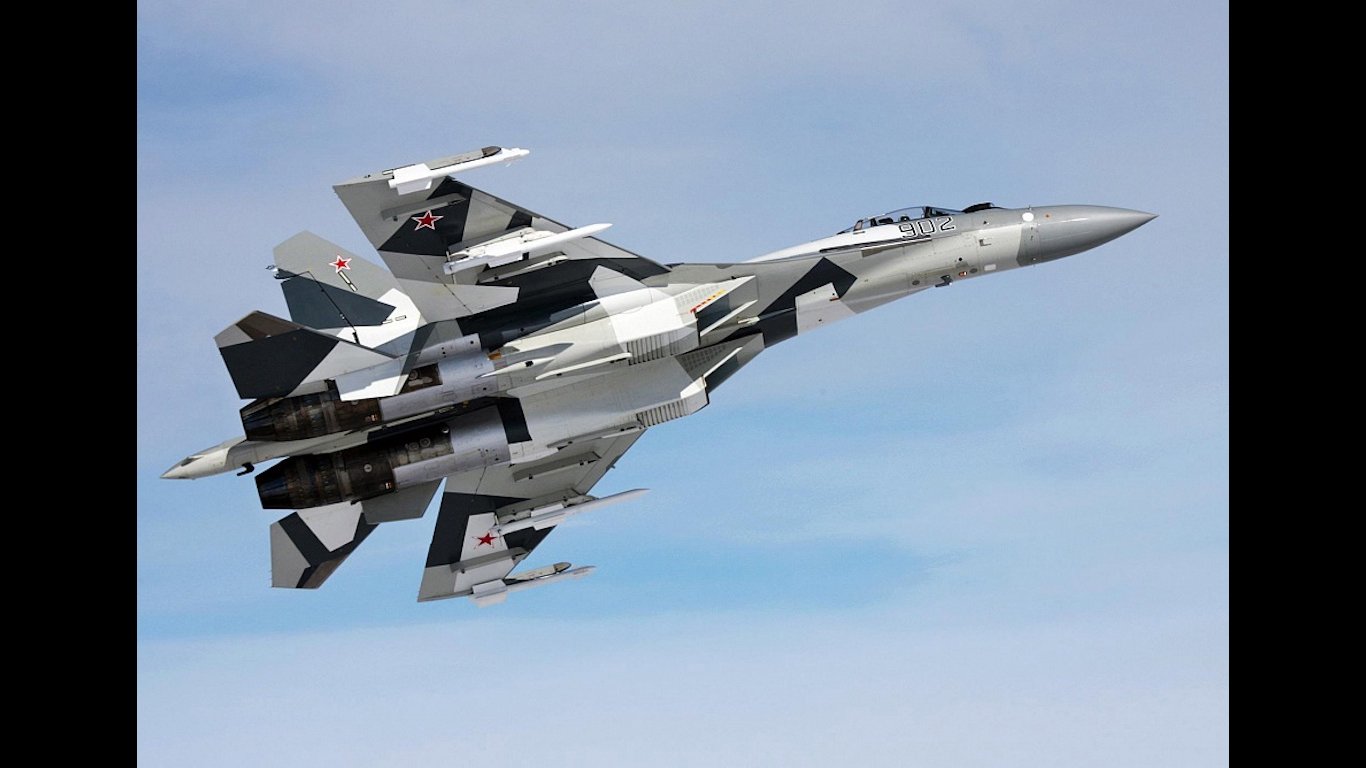
13. United Aircraft Corp.
> Country: Russia
> Arms sales: $5.2 billion
> Total sales: $6.2 billion
> Profit: -$67.0 million
> Employees: N/A
Established by decree in 2006, United Aircraft Corp. is the largest defense contractor in Russia by arms sales revenue and the 13th largest in the world. The company is the result of the merger of several aircraft manufacturers and other related companies. Though the company also manufactures commercial aircraft, the bulk of its revenue comes from military aircraft sales. While the company has several international clients along with joint ventures in India and Italy, the Russian Foreign Ministry of Defense has accounted for the majority of the company’s military aircraft business since 2013. Among the many aircraft the company manufactures is the iconic Mikoyan MiG fighter jet.
Despite billions in revenue, United Aircraft Corp. is the only company on this list to report a negative gross profit margin in 2016. That year, the company’s costs exceeded revenue by $67 million. The company expects to reach a minimum of 10% profitability by 2025.
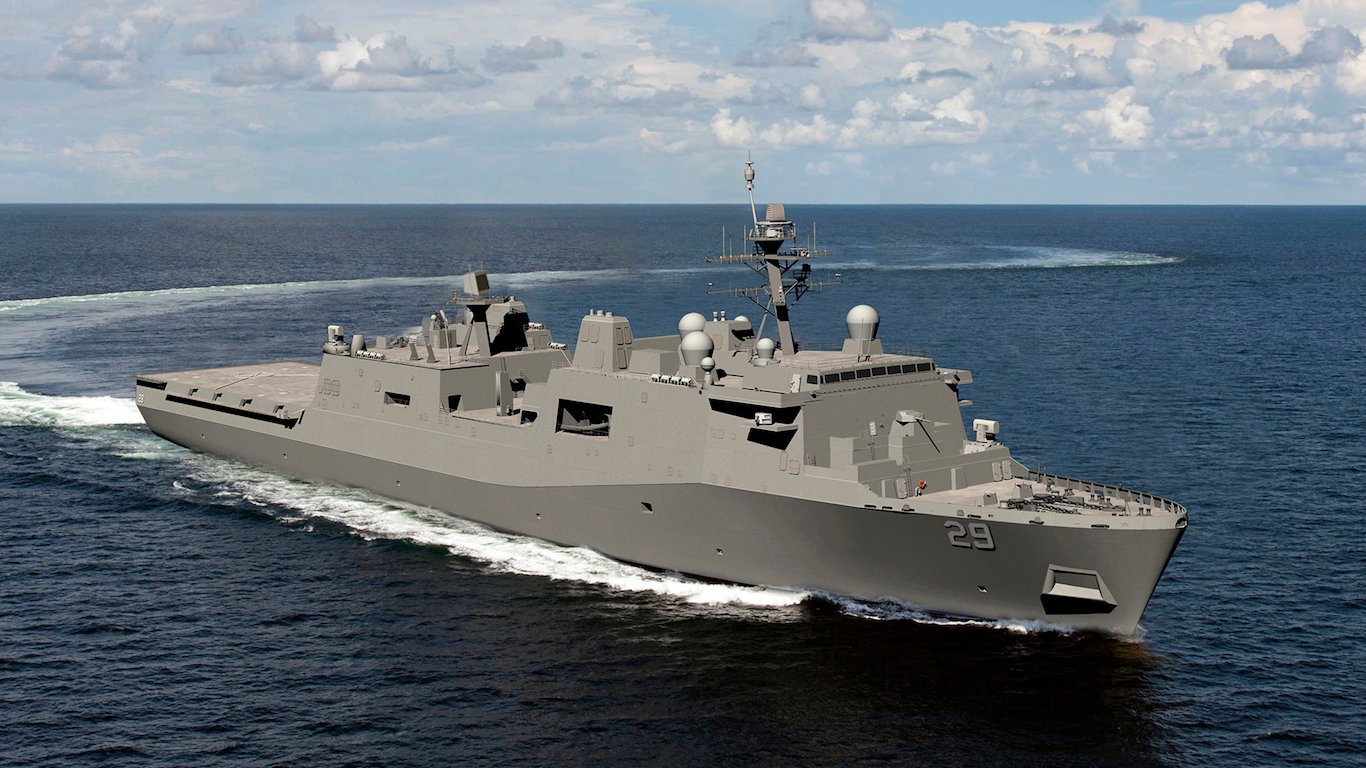
12. Huntington Ingalls Industries
> Country: United States
> Arms sales: $6.7 billion
> Total sales: $7.1 billion
> Profit: $573.0 million
> Employees: 37,000
Spinning off from Northrop Grumman in 2011, Huntington Ingalls Industries is a far younger company than most major defense contractors. Still, the Virginia-based contractor is the largest military shipbuilding company in the United States. The company’s plant in Newport News is the sole manufacturer of U.S. Navy aircraft carriers — the largest warships in the world — and one of only two nuclear submarine manufacturers. The company also has a shipbuilding facility in Pascagoula, Mississippi, which is responsible for the construction of about 70% of all U.S. Navy warships.
The private and commercial sector accounts for a considerable share of revenue for the majority of companies on this list. Huntington Ingalls is an exception, however, as weapons sales account for about 95% of its annual revenue.
[in-text-ad-2]

11. United Technologies Corp.
> Country: United States
> Arms sales: $6.9 billion
> Total sales: $57.2 billion
> Profit: $5.4 billion
> Employees: N/A
A multinational conglomerate, United Technologies Corp. is the third largest company on this list with over $57 billion in total revenue in 2016. Arms sales and military services accounted for a relatively small 12% share of the company’s revenue that year. Still, the $6.9 billion the company made on defense contracts in 2016 was more than all but 10 other companies worldwide.
A considerable share of arms sales came through subsidiary Pratt & Whitney, a military aircraft engine manufacturer. Sales from defense contracts at Pratt & Whitney, which works with 34 militaries worldwide and manufactures the engines that power the F-22, F-15, and F-16 fighter jets, totalled $4.5 billion in 2016. United Technologies’ non-military subsidiaries include the Otis elevator company and the Carrier climate control company.
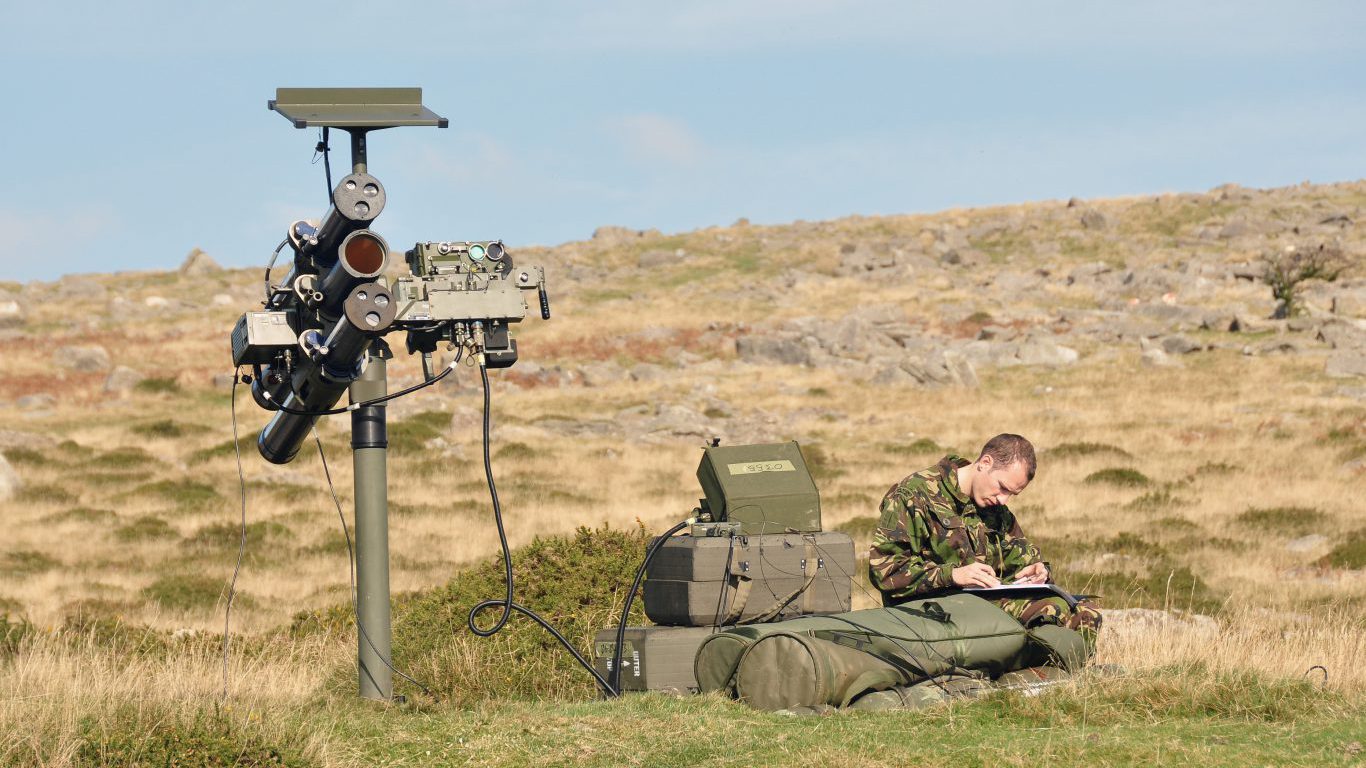
10. Thales
> Country: France
> Arms sales: $8.2 billion
> Total sales: $16.5 billion
> Profit: $1.1 billion
> Employees: 64,100
French defense contractor Thales develops and manufactures electrical and weapons systems for ground, sea, and air operations. The company’s products include field optics, armored vehicles, missile defense systems, and helicopter navigation equipment. The company also produces naval anti-aircraft systems, sonar, unmanned aerial vehicles, and military avionics.
One of the largest defense contractors in Europe, Thales’ arms sales and services accounted for about half of its 2016 revenue. The company’s other segments include space exploration, mass transportation, and security services.
[in-text-ad]
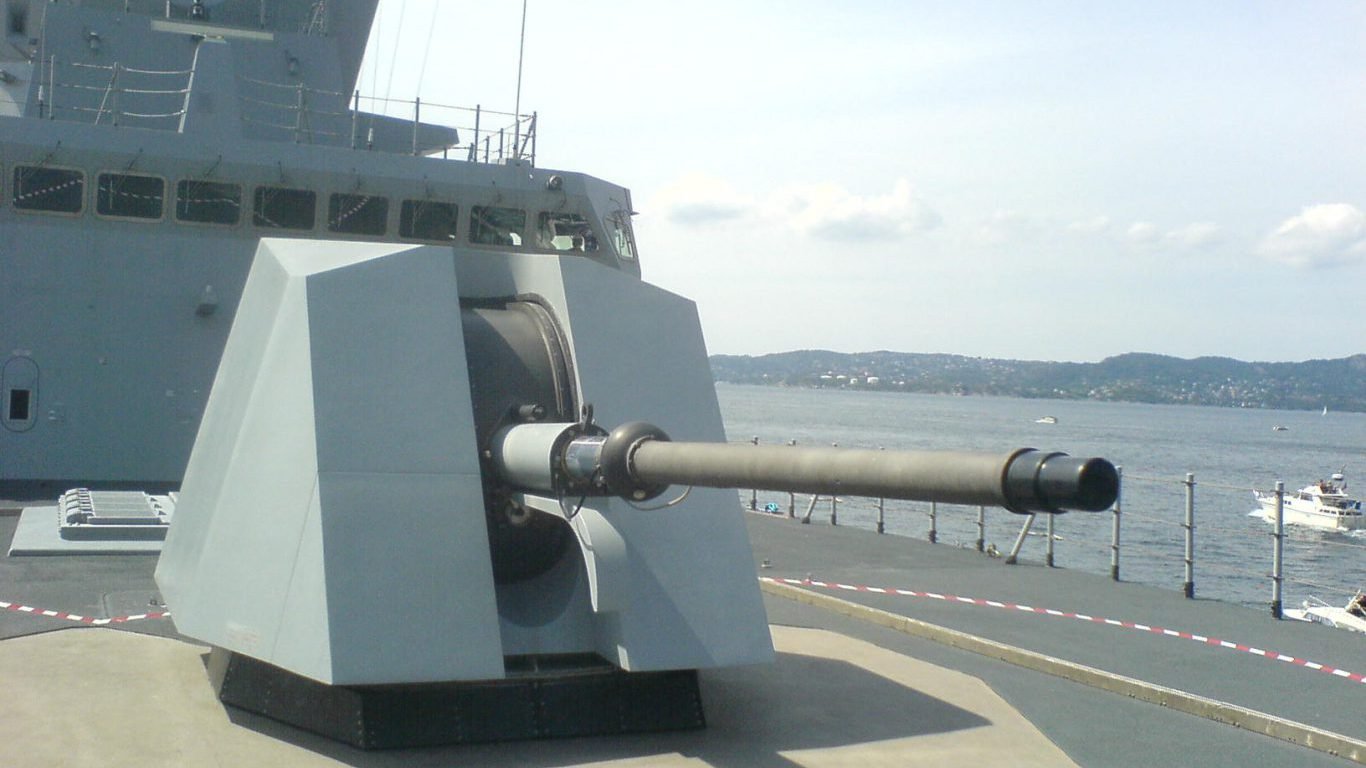
9. Leonardo
> Country: Italy
> Arms sales: $8.5 billion
> Total sales: $13.3 billion
> Profit: $561.0 million
> Employees: 45,630
Leonardo — formerly known as Finmeccanica — is the largest of only two Italian defense contractors to rank among the 100 largest weapons and military services companies in the world. Like many companies on this list, Leonardo’s operations span multiple fields of defense, including aircraft, electronics, information, and artillery. The company’s aircraft division produces a range of military vehicles, including fighter jets, helicopters, and unmanned aerial vehicles. The company also manufactures a range of naval, aerial, and surface ammunition, including missiles and torpedoes.
Though Leonardo also manufactures equipment for non-military space programs, defense contracts accounted for 64% of the company’s revenue in 2016.

8. L-3 Communications
> Country: United States
> Arms sales: $8.9 billion
> Total sales: $10.5 billion
> Profit: $647.0 million
> Employees: 38,000
Defense contractor L-3 Communications is based in New York City. Each of the company’s four business segments — electronic, aerospace, communication, and sensor systems — has contracts with the federal government for defense purposes. L-3’s products and services include unmanned aerial vehicle controls, submarine propulsion systems, and pilot training programs. L-3’s market is not limited to the United States. The company has locations in 29 countries and lucrative contracts with multiple foreign governments, including Australia, Canada, Japan, and Saudi Arabia.
Outside of defense contracting, L-3 also manufactures sensor systems commonly found at airport security checkpoints. Still, military sales and services accounted for nearly 85% of the company’s $10.5 billion in revenue in 2016.
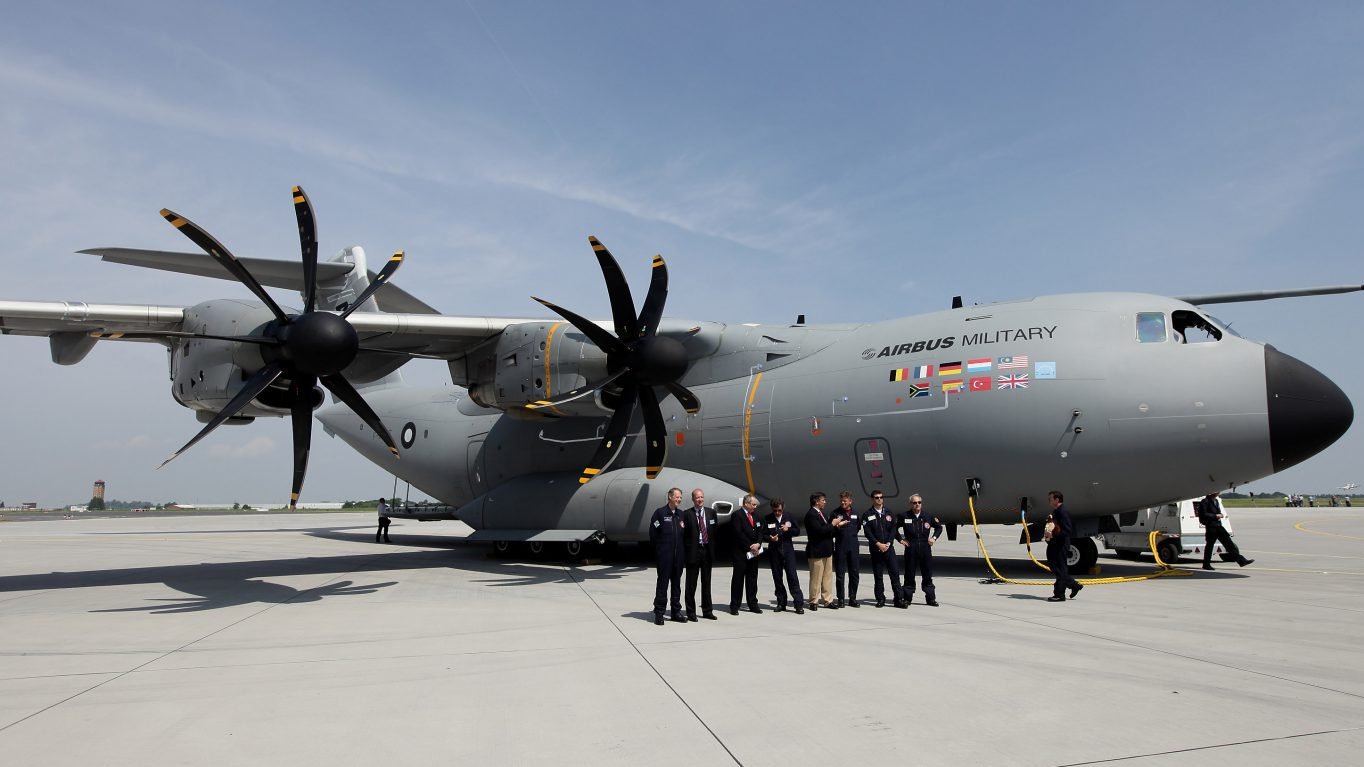
7. Airbus Group
> Country: Trans-European
> Arms sales: $12.5 billion
> Total sales: $73.7 billion
> Profit: $1.1 billion
> Employees: 133,780
Airbus is the second largest defense contractor in Europe and the seventh largest worldwide by total weapons sales. Defense contracts accounted for $12.5 billion of the company’s $73.7 billion 2016 revenue. The company’s military products and services range from cybersecurity to fighter jets, attack helicopters, and unmanned aerial vehicles. Currently, 526 of the company’s Eurofighter Typhoon fighter jets are in operation in eight countries — four of which outside of the aircraft’s intended market of Europe.
Outside of weapons systems and military services, the company derives the bulk of its revenue from commercial aircraft and spacecraft.
[in-text-ad-2]

6. General Dynamics Corp.
> Country: United States
> Arms sales: $19.2 billion
> Total sales: $31.4 billion
> Profit: $3.0 billion
> Employees: 98,800
Headquartered in Falls Church, Virginia, defence contractor General Dynamic has operations in 46 countries. From its beginnings in the 1950s through the early 1990s, the company manufactured tanks, missiles, rockets, warships, and submarines to all branches of the U.S. armed services. Due to the defense industry downturn in the early 1990s, General Dynamics sold all of its branches with the exceptions of its electric boat and land systems operations.
Today, the company manufactures armored vehicles and tanks in addition to nuclear-powered submarines and surface vessels. The company has also made several considerable acquisitions in recent decades, including Bath Iron Works in 1995 and Gulfstream Aerospace in 1999. Bath Iron Works is where the company is building the state-of-the-art Zumwalt-class destroyer for the U.S. Navy.
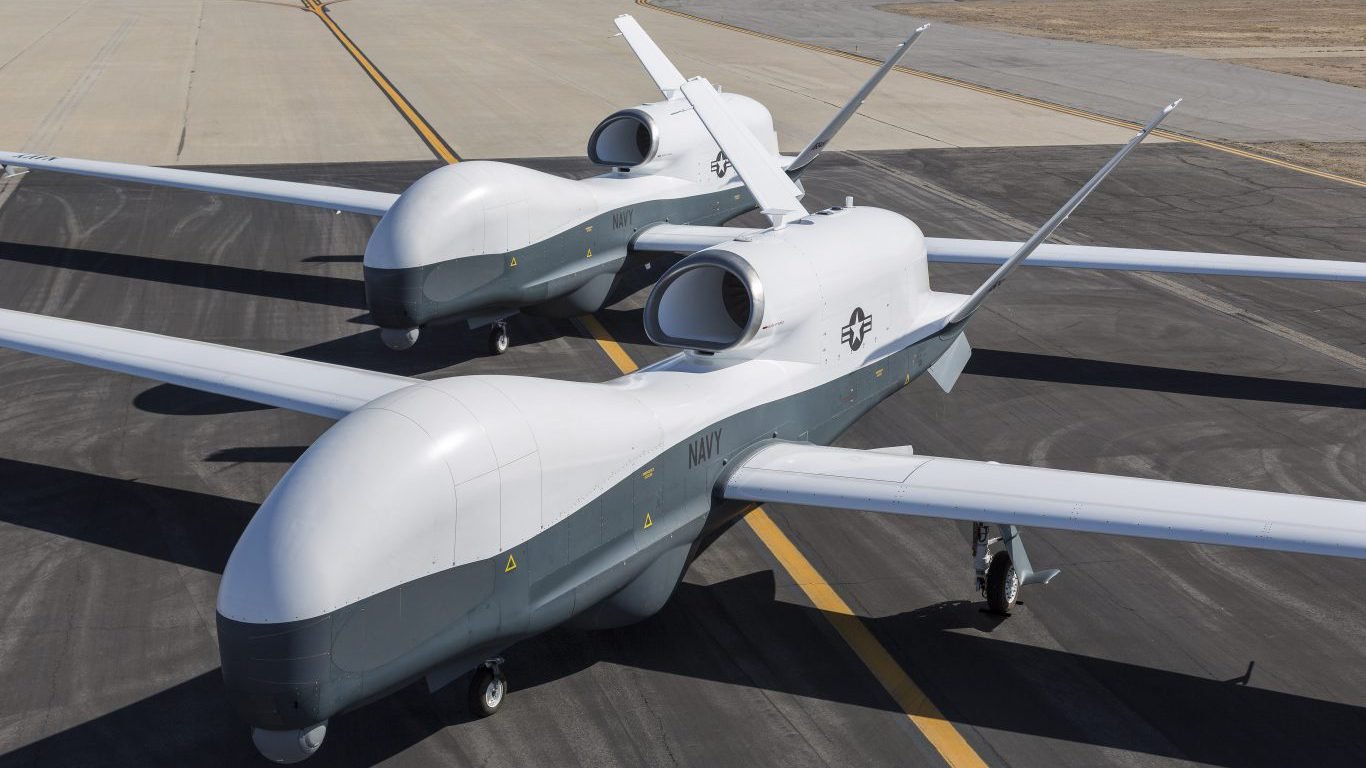
5. Northrop Grumman Corp.
> Country: United States
> Arms sales: $21.4 billion
> Total sales: $24.5 billion
> Profit: $2.2 billion
> Employees: 67,000
Falls Church, Virginia-based defense contractor Northrop Grumman employs some 67,000 people in over 25 countries and in all 50 states. One of the world’s largest defense contractors by revenue, the company is behind one of the most advanced — and iconic — aircraft of the U.S. military arsenal. The B-2 Spirit Stealth Bomber can fly 6,000 nautical miles without needing to refuel and carry up to 20 tons of ordnance — either nuclear or conventional. The U.S. military relied on the bomber in both Iraq, Afghanistan, and most recently in Libya. Adjusted for inflation, a single B-2 bomber cost over $2 billion, and the U.S. Air Force currently has 20 in operation.
The company’s other business segments include unmanned aerial vehicle manufacturing, cyber security, and logistics. Arms sales and military services accounted for 87.3% of the company’s $24.5 billion in revenue in 2016.
[in-text-ad]
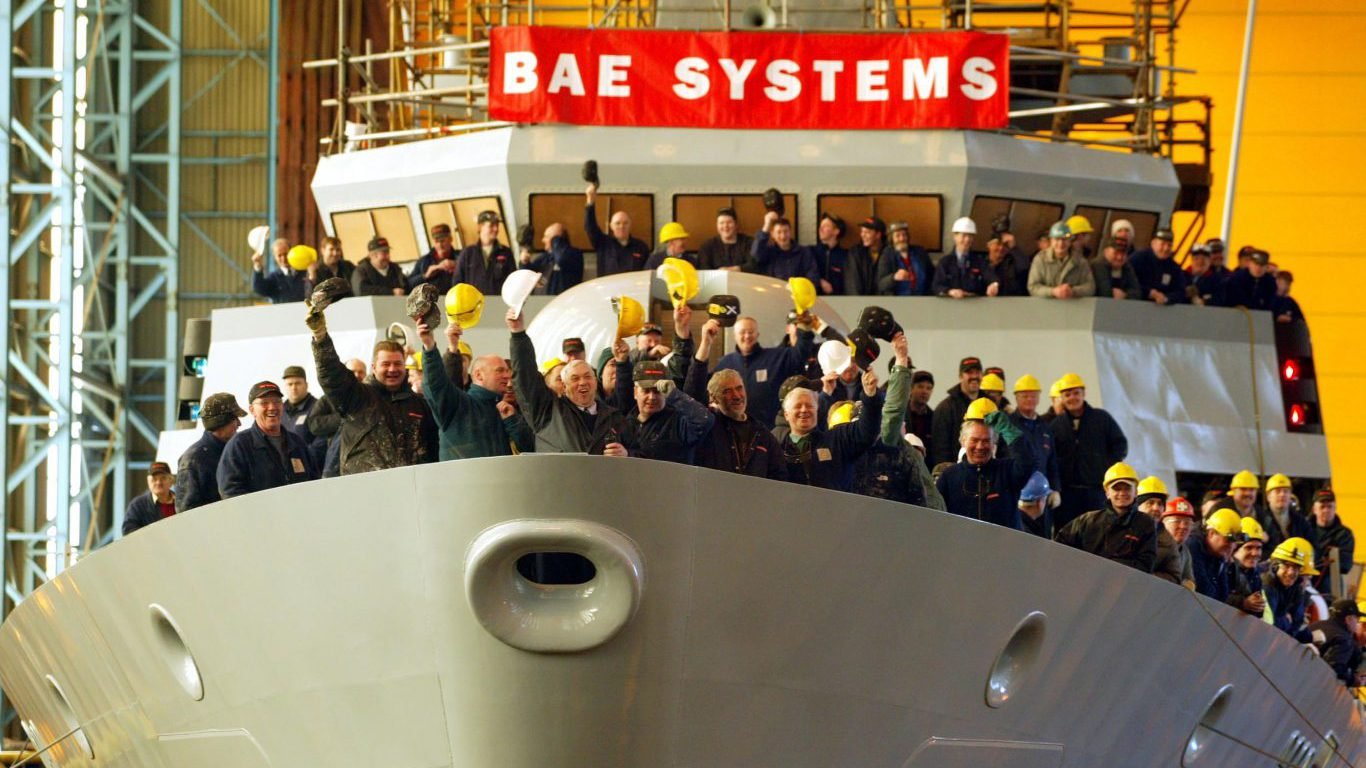
4. BAE Systems
> Country: United Kingdom
> Arms sales: $22.8 billion
> Total sales: $24.0 billion
> Profit: $2.4 billion
> Employees: 83,000
BAE Systems is the largest defense contractor in the United Kingdom, and the fourth largest in the world. Though headquartered in England, the company employs some 83,000 people worldwide, with a heavy presence in the United States, Saudi Arabia, and Australia. The company designs and builds fighter jets, surface combat vehicles, artillery systems, military electronics, and provides cyber security services.
While many companies on this list also have substantial commercial operations, BAE Systems is not one of them. Of the company’s $24.0 billion in revenue in 2016, nearly 95% came from arms sales and military services.
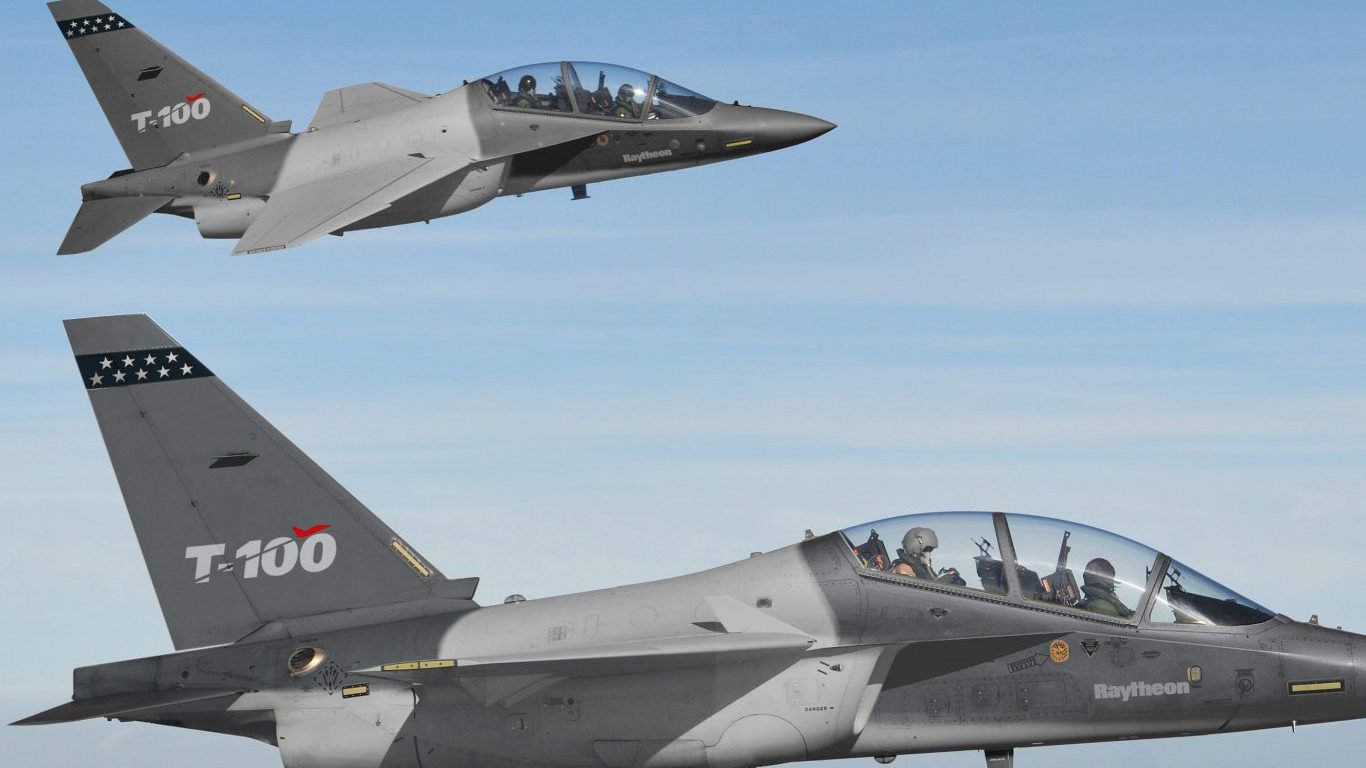
3. Raytheon
> Country: United States
> Arms sales: $22.9 billion
> Total sales: $24.1 billion
> Profit: $2.2 billion
> Employees: 63,000
Raytheon was established in the early 1920s as a consumer electronics company. With the onset of WWII, Raytheon began producing critical components for British and American radars in addition to proximity fuses for anti-aircraft shells. Today, the Massachusetts-based contractor specializes in defense and cyber-security and ranks as the third largest arms company in the world.
The company also designs and manufactures a range of laser and satellite-guided missiles, torpedoes, and munitions — as well as missile defense systems. Over a dozen countries, including the United States, Germany, Japan, and Saudi Arabia, rely on the Raytheon’s Global Patriot Solutions missile defense system. The U.S. also uses the company’s more advanced Terminal High-Altitude Area Defense, which is capable of intercepting warheads as they re-enter the earth’s atmosphere. Earlier this year, the U.S. Department of Defense inked a $650 million contract with Raytheon to sell 280 SM-2 missiles — which are typically used to defend naval vessels from an aerial attack — to the Netherlands, South Korea, Japan, and Australia.
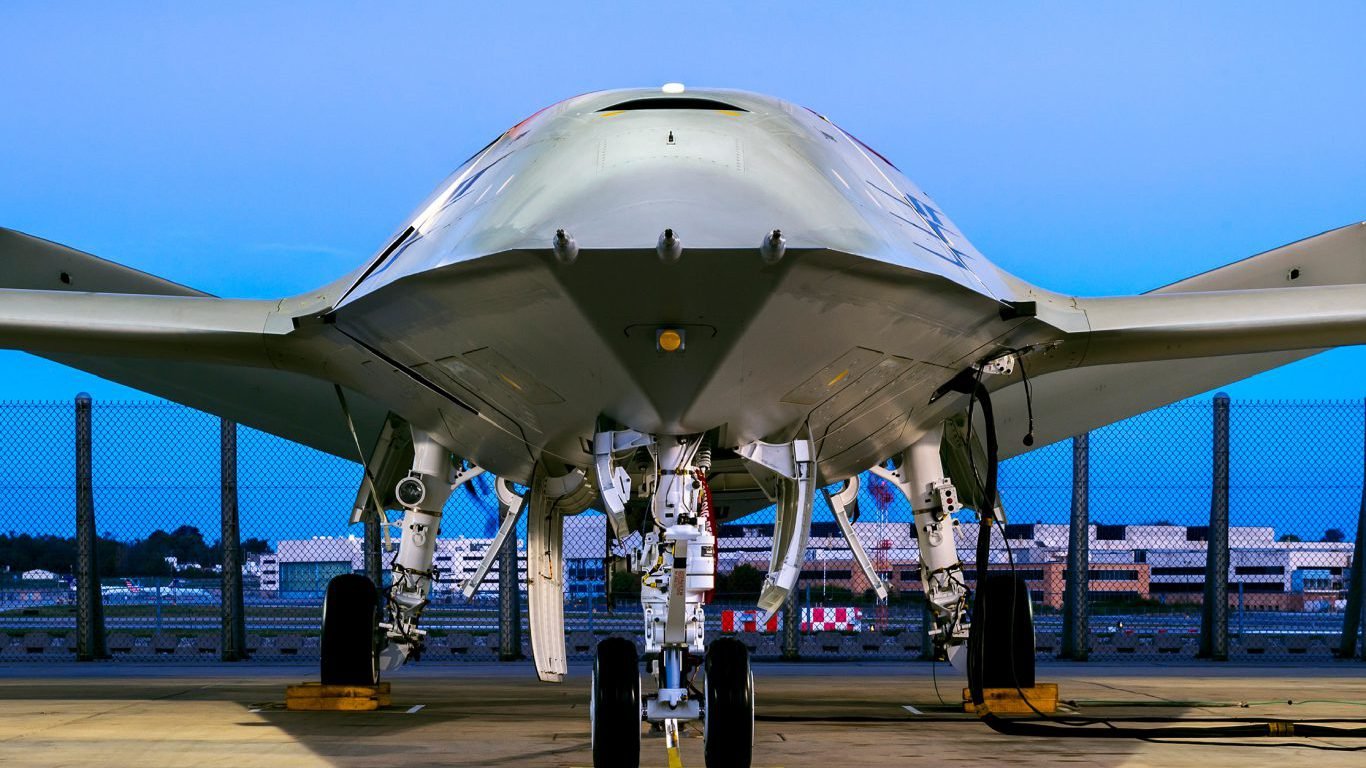
2. Boeing
> Country: United States
> Arms sales: $29.5 billion
> Total sales: $94.6 billion
> Profit: $4.9 billion
> Employees: 150,500
Chicago-based aeronautics company Boeing reported $29.5 billion in arms sales in 2016, the most of any company in the world after only Lockheed Martin. The U.S. Navy, Air Force, and Marines — in addition to allies abroad — rely on long-range munitions from Boeing’s Harpoon Weapon System. Boeing also manufactures and sells such fixtures in the U.S. arsenal as the Apache attack helicopter, the Chinook transport helicopter, the B-52 bomber, and the F-15 Eagle and F/A-18 Super Hornet fighter jets.
Though Boeing ranks as the second largest defense contractor in the world, arms sales comprise a relatively small share of the company’s overall revenue — just 31.2% of the company’s 2016 sales came from defense contracts. Boeing-built commercial airliners total more than 10,000 and comprise nearly half of all in-service aircraft worldwide.
[in-text-ad-2]
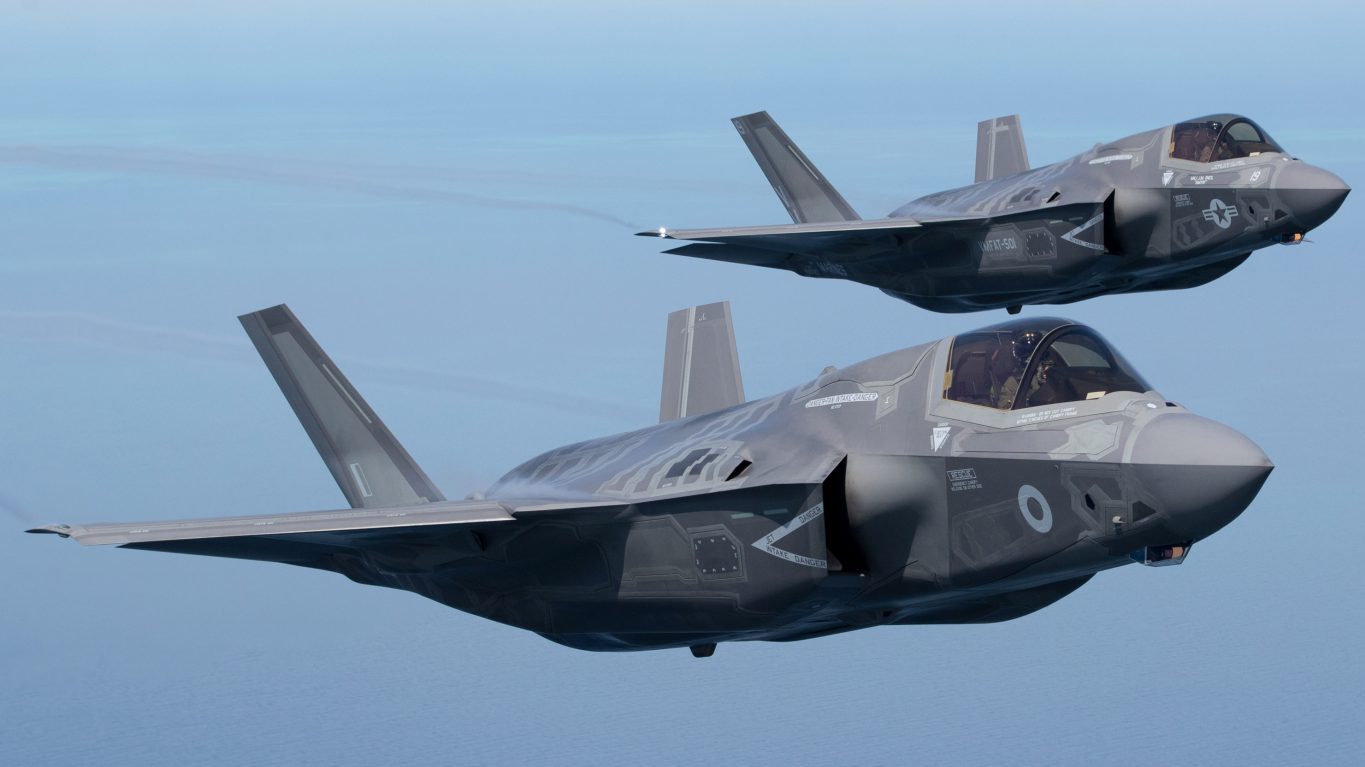
1. Lockheed Martin Corp.
> Country: United States
> Arms sales: $40.8 billion
> Total sales: $47.2 billion
> Profit: $5.3 billion
> Employees: 97,000
With over $40 billion in arms sales in 2016, Lockheed Martin is the largest defense contractor in the world by a wide margin. The vast majority of the company’s revenue came directly from the U.S. government. Lockheed’s F-35 Joint Strike Fighter in particular has been a boon. A 60-year deal for the stealth fighter jet is valued at an estimated $1 trillion — the most expensive weapons deal in Defense Department history. Lockheed sold 66 F-35 jets to the United States and its allies in 2017 and is projected to sell another 90 this year. The F-35 is one of the newer additions to the company’s lineup, which includes the F-22 Raptor and F-16 fighter jets, the C-130 Hercules airlifter, and following Lockheed’s 2015 acquisition of Sikorsky, the Black Hawk helicopter.
Lockheed Martin’s other business segments include missile defense, radar, naval warfare technology, and intercontinental ballistic missiles.
Detailed Findings
It is no coincidence that the majority of the largest defense contractors in the world are based in the United States. In an email exchange with 24/7 Wall St., Dr. Aude Fleurant, programme director at SIPRI, explained that “as a general rule, arms companies make a significant share of their arms sales with their national ministry of defence or equivalent agency.” And the Department of Defense’s demand for arms and military services is immense.
The United States spends more on defense than the next eight biggest spenders combined — including countries like Russia, China, France, and the United Kingdom. “The U.S. is by far the largest market in the world for arms,” said Fleurant, “so the size of demand will correlate with companies’ arms sales.” Reflecting the large U.S. defense expenditure, arms revenue of American companies account for over 73% of all arms sales of the 20 contractors on this list.
While the U.S. government is the largest client of American defense contractors, weapons makers in other countries have to rely on sales outside of their domestic market. “Contrary to the U.S., the French national market is narrow and insufficient to support the industry therefore, exports are being approved sometimes to countries which are considered problematic,” Fleurant said. Thales is the only French company to make the list of the 20 largest defense contractors.
One major factor driving arms sales are wars. “There are a number of wars now into which several countries are involved, including the U.S.” Fleurant said. These conflicts include the intervention in Syria and ongoing civil wars in Libya and Yemen. “Specific military equipment is in demand for these wars, this tends to increase arms sales.”
Another factor driving arms sales and this year’s uptick in defense company revenue is geopolitical tensions and threat perception. “Regional tensions such as the ones we have been observing for several years in the South China Sea and the East China Sea regarding territorial sovereignty over some part of the sea have led countries in that region to import new weapons such as submarines and maritime patrol aircraft, creating demand,” Fleurant said.
Racking up a tab with defense companies is not difficult. A single F-35 fighter jet from Lockheed Martin costs just under $100 million, and a single Northrop Grumman B-2 bomber cost an estimated $2 billion, adjusted for inflation.
Methodology
To identify the companies profiting the most from war, 24/7 Wall St. reviewed data provided by the Stockholm International Peace Research Institute in its annual SIPRI Top 100, a review of the the largest arms-producing and military services companies by arms sales. Due to a lack of sufficient data, SIPRI excluded Chinese companies from the report. Employment data, profit figures, and arms sales as a percentage of total sales also came from the SIPRI report and are for the 2016 calendar year. Other company-specific data were obtained from annual financial reports.
Take This Retirement Quiz To Get Matched With A Financial Advisor (Sponsored)
Take the quiz below to get matched with a financial advisor today.
Each advisor has been vetted by SmartAsset and is held to a fiduciary standard to act in your best interests.
Here’s how it works:
1. Answer SmartAsset advisor match quiz
2. Review your pre-screened matches at your leisure. Check out the
advisors’ profiles.
3. Speak with advisors at no cost to you. Have an introductory call on the phone or introduction in person and choose whom to work with in the future
Take the retirement quiz right here.
 24/7 Wall St.
24/7 Wall St.